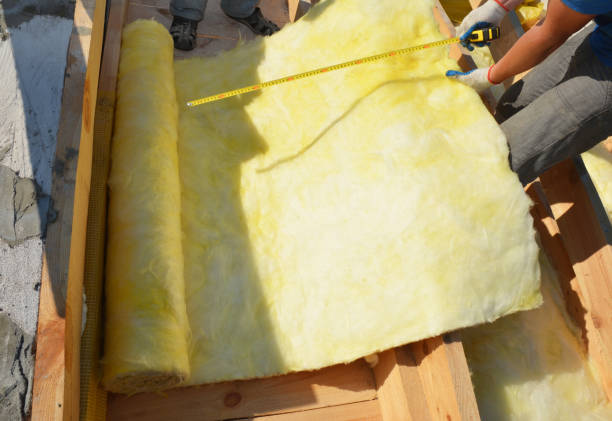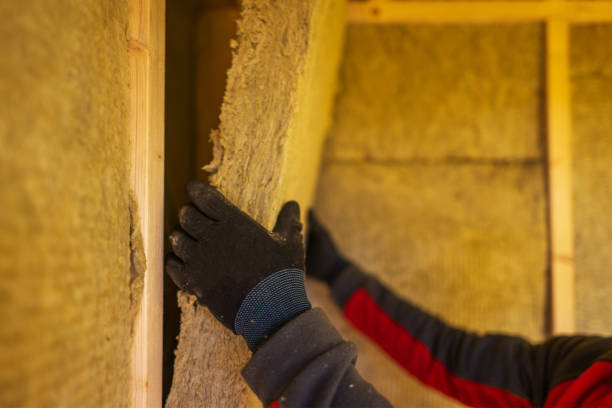How to Install Insulation in Walls: A Complete Step-by-Step Guide
Discover the ultimate guide on how to install insulation in walls with FUNAS. Our complete step-by-step approach ensures energy efficiency and comfort. Perfect for DIY enthusiasts and professionals alike, this guide covers all essential tips and techniques. Follow FUNAS for expert advice on achieving the best insulation results for your walls. Enhance your home's energy performance today!
- Introduction
- Why Insulating Your Walls is Important
- How to Install Insulation in Walls?
- Step 1: Choose the Right Insulation for Your Walls
- Step 2: Gather the Necessary Tools and Materials
- Step 3: Prepare the Area for Insulation Installation
- Step 4: Measure and Cut Insulation to Fit
- Step 5: Install the Insulation
- Step 6: Seal the Gaps and Finish the Installation
- Conclusion
- FAQs
Introduction
Why Insulating Your Walls is Important
-
Energy Efficiency: Insulation reduces heat loss in the winter and prevents heat gain in the summer, reducing the need for excessive heating or cooling.
-
Comfort: Well-insulated walls help keep your home at a consistent and comfortable temperature.
-
Soundproofing: Insulation also acts as a sound barrier, reducing noise from outside or between rooms.
-
Environmentally Friendly: By reducing energy consumption, insulation helps lower your carbon footprint.
How to Install Insulation in Walls?

Step 1: Choose the Right Insulation for Your Walls
-
Fiberglass: One of the most common heat-resistant insulation materials, fiberglass insulation is easy to install and provides excellent thermal resistance.
-
Foam Board: Foam board insulation offers superior insulation properties and is ideal for exterior walls in cold climates.
-
Cellulose: A more eco-friendly option, cellulose is made from recycled paper products and offers good soundproofing properties.
-
R-Value: The R-value measures the insulation’s ability to resist heat flow. The higher the R-value, the better the insulation.
-
Moisture Resistance: Certain materials, like foam board and fiberglass, are resistant to moisture, which can be beneficial in areas prone to dampness.
-
Installation Complexity: Some materials are easier to install than others, so consider your skill level and whether you prefer a DIY project or need professional assistance.
Step 2: Gather the Necessary Tools and Materials
-
Utility Knife: To cut the insulation to the required size.
-
Measuring Tape: For accurate measurements of wall cavities.
-
Stapler: To secure the insulation in place (if using batt or roll insulation).
-
Protective Gear: Gloves, goggles, and a dust mask to protect yourself while working with insulation materials.
-
Insulation Rolls/Batts: Depending on the type of insulation you choose.
-
Vapor Barrier: Helps protect the insulation from moisture, particularly in areas prone to dampness.
-
Drywall or Paneling: For finishing the installation once the insulation is in place.
Step 3: Prepare the Area for Insulation Installation
-
Remove any debris, old materials, or obstacles from the wall cavity.
-
If you're installing insulation in a room with existing drywall, you may need to remove the drywall to access the wall cavity.
-
Wear gloves, goggles, and a dust mask to protect yourself from insulation fibers, especially if you're working with fiberglass.
Step 4: Measure and Cut Insulation to Fit
-
Measure the height and width of each wall cavity, leaving a small gap for air circulation.
-
Cut the insulation material to fit, ensuring it fills the cavity without gaps.
-
Use a utility knife or a serrated knife to cut the insulation to the correct size.
-
Ensure the edges of the insulation fit snugly against the sides of the cavity.
Step 5: Install the Insulation
-
Position the insulation in the wall cavity.
-
Ensure the insulation fits tightly, with no gaps around the edges.
-
If necessary, secure the insulation in place using staples or adhesive.
Step 6: Seal the Gaps and Finish the Installation
-
Seal gaps around windows, doors, and electrical outlets with caulk or foam sealant.
-
Install a vapor barrier if necessary, particularly in damp areas.
-
Once the insulation is installed and sealed, cover it with drywall or paneling to complete the installation.
Conclusion
FAQs
-
Installing insulation can be a DIY project for those with basic tools and some experience, but it may be challenging for beginners. Professional help may be needed for certain types of insulation.
-
In some cases, wall insulation can be installed without removing drywall, such as with blown-in cellulose insulation.
-
If your home maintains a comfortable temperature and you notice a reduction in energy bills, your insulation is likely effective. You can also check for gaps or drafts during a home energy audit.

Top 10 Global Polyurethane Foam Manufacturers for 2026

Ultimate 2026 Guide to Car Noise Insulation: Silence Your Ride

Ultimate Guide to Rubber Sheets: How to Choose in 2026

Ultimate Guide to Glass Wool: Properties, Uses & Benefits
FAQ
How to start a consultation?
You can contact us through our website, phone, or email. We will arrange a professional staff to discuss your needs about best thermal insulator and how we can help you.
What is the typical delivery time for custom orders?
Our daily production capacity is 800 cubic meters. Delivery time varies depending on the complexity of the insulation material wholesale order, but we can deliver large quantities of customized products within 4-6 weeks after the approval date, and small quantities can be delivered within 15 days.
What types of rubber foam insulation do you offer?
We offer a wide range of rubber foam insulation with different thicknesses and specifications. Thermal insulation material manufacturer FUNAS sleeves and sheets are suitable for different application scenarios.
How do I choose the right insulation for my project?
Our team can help you choose the best material for heat insulation based on your specific needs, such as thermal resistance, acoustic properties, and environmental conditions.
You might also like

Wholesale Roof And Wall Thermal Heat Insulation 50mm Thickness Aluminum Foil Fiberglass Insulation Panel Board Glass Wool Price
Glass wool is the molten glass fiber, the formation of cotton-like material, chemical composition belongs to the glass category, is a kind of inorganic fiber. With good molding, small volume density, thermal conductivity both, thermal insulation, sound absorption performance is good, corrosion resistance, chemical stability and so on.

Wholesale Glass Wool Board Panel Sheet with or without aluminum foil
Premium glass wool board with excellent thermal insulation and sound absorption. Suitable for different construction needs.

Wholesale Glass Wool Roll Blanket with or without aluminum foil
Convenient glass wool roll for easy installation. Provides effective insulation and noise reduction.

Wholesale Roof And Wall Thermal Heat Insulation 50mm Thickness Aluminum Foil Fiberglass Insulation Roll Glass Wool
Glass wool is the molten glass fiber, the formation of cotton-like material, chemical composition belongs to the glass category, is a kind of inorganic fiber. With good molding, small volume density, thermal conductivity both, thermal insulation, sound absorption performance is good, corrosion resistance, chemical stability and so on.
Leave a message
Have any questions or concerns about our products? Please leave us a message here and our team will get back to you promptly.
Your queries, ideas, and collaboration opportunities are just a click away. Let’s start a conversation.



















































